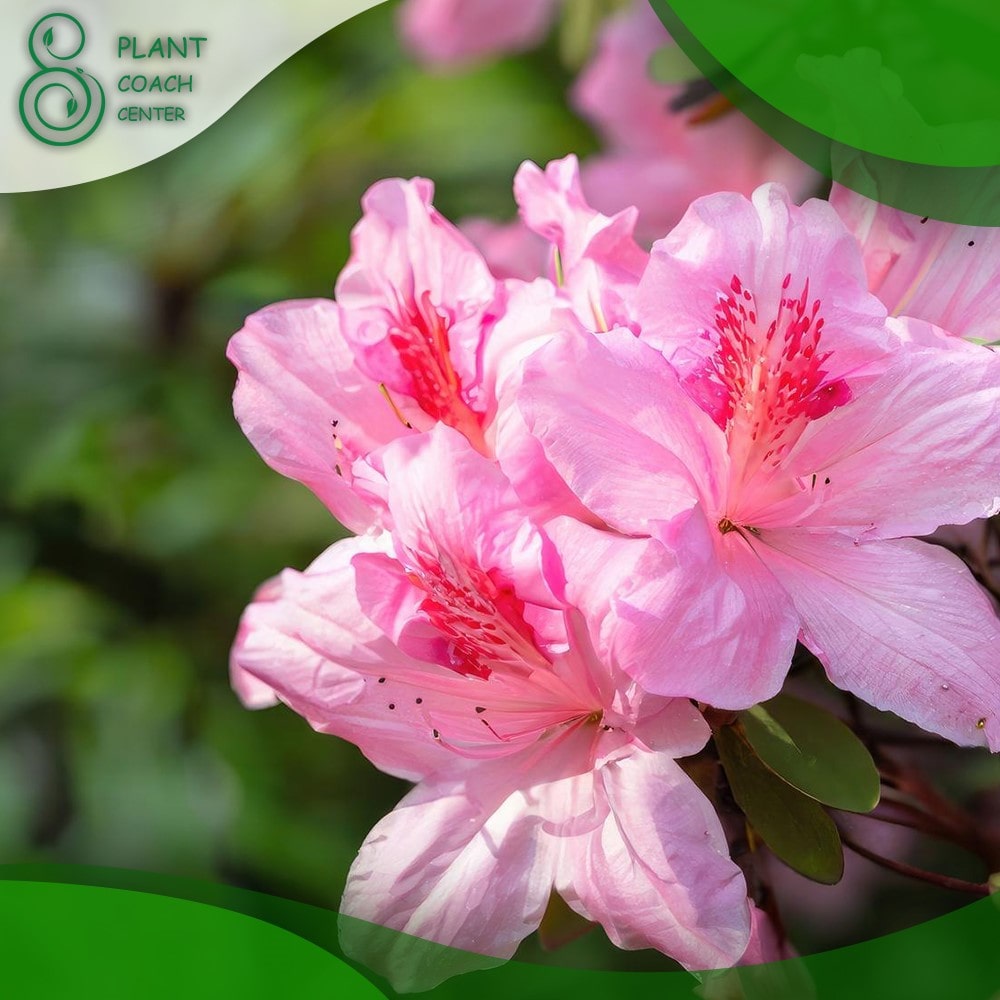When Do You Prune the Rose of Sharon?
Welcome to the world of enchanting blooms and verdant beauty – the realm of the Rose of Sharon. As gardeners and enthusiasts, we’re captivated by the elegance this exquisite flowering shrub brings to our outdoor spaces. Yet, as much as we revel in its seasonal splendor, we also recognize the significance of nurturing and tending to its growth.
Among the many practices that contribute to its vitality, pruning is an art that requires finesse and knowledge. The timing of pruning, in particular, holds the key to unlocking the Rose of Sharon’s true potential. In this guide, we journeyed through the seasons, uncovering the secrets of when and how to prune this botanical gem. Whether it’s the dormancy of winter, the renewal of spring, the vibrancy of summer, or the anticipation of fall, each phase presents an opportunity to sculpt and shape with purpose.
Join us as we explore the harmonious choreography of timing and technique, ensuring that your Rose of Sharon remains a breathtaking centerpiece in your garden tapestry.

Timing Your Pruning Dance
Just like a skilled dancer who moves in tune with the music, successful gardening involves synchronizing your actions with the rhythms of the seasons. When it comes to pruning your Rose of Sharon, timing is everything. Each season has its own role to play in the lifecycle of this shrub, influencing its growth, flowering, and overall health. Understanding these nuances empowers you to make informed decisions that enhance your plant’s beauty and vigor.
Dormant Pruning for Rejuvenation
Winter, a time of hushed landscapes and resting plants, provides a serene backdrop for dormant pruning. When the leaves have fallen, and the Rose of Sharon has entered its winter slumber, it’s the perfect moment to perform maintenance.
The absence of foliage exposes the shrub’s structure, making identifying and removing dead or crossing branches easier. This method shapes the plant and encourages healthy new growth come spring. Pruning during dormancy prevents stress on the plant since it isn’t actively growing, ensuring that vital resources are conserved.
Seizing the Renewal Energy
As spring unfolds its vibrant canvas, your Rose of Sharon awakens from its dormancy with newfound vitality. This is the time for rejuvenation, and strategic pruning plays a pivotal role. Before the buds break, early spring is ideal for shaping the shrub and thinning out excess growth.
Removing weak or damaged branches redirects the plant’s energy towards healthy blooms and lush foliage. Be cautious not to prune too late into spring, as it could risk removing the forming buds and reducing the flowering display.
Guiding Growth Amidst Abundance
The warm embrace of summer brings forth an explosion of life in your garden, and your Rose of Sharon is no exception. While many shrubs are pruned after their flowering period, Rose of Sharon benefits from light, strategic pruning during early to mid-summer.
This technique involves removing spent blooms to encourage new ones and maintaining the shrub’s shape. Doing so ensures the plant’s energy is focused on producing more captivating blossoms while still enjoying the seasonal flourish.
Unveiling the Secrets of Dormant Pruning
As the world around us takes on a tranquil stillness, your Rose of Sharon retreats into its winter slumber, preparing for a burst of new life in the upcoming months. This dormant phase provides a unique opportunity for gardeners to engage in a practice known as dormant pruning—a secret to unlocking the full potential of your shrub’s beauty and vitality.
Dormant pruning involves carefully trimming your Rose of Sharon while it rests, without the distraction of leaves and flowers. This period, usually in late winter or early spring, allows you to observe the shrub’s natural structure and identify areas that require attention. By gently removing dead, diseased, or crossing branches, you create a framework that encourages the growth of healthy, vigorous new shoots.
One of the advantages of dormant pruning is the reduced stress on the plant. Since it’s not actively growing or expending energy on producing leaves and flowers, the Rose of Sharon can allocate resources towards healing and rejuvenation. This practice also aids in preventing the spread of diseases, as the absence of leaves limits the avenues for pathogens to establish themselves.
When engaging in dormant pruning, remember that less is often more. It’s about selectively enhancing the shrub’s architecture rather than drastically altering its form. Additionally, use sharp, clean tools to make clean cuts that promote quick healing. Pruning paint or wound sealants is generally unnecessary, as the plant will naturally close off the cut areas.
By embracing the art of dormant pruning, you’re contributing to the Rose of Sharon’s long-term health and beauty. As winter blankets your garden, take advantage of this serene season to sculpt your shrub, revealing its inherent grace and setting the stage for an impressive display of growth and blooms in the coming months.
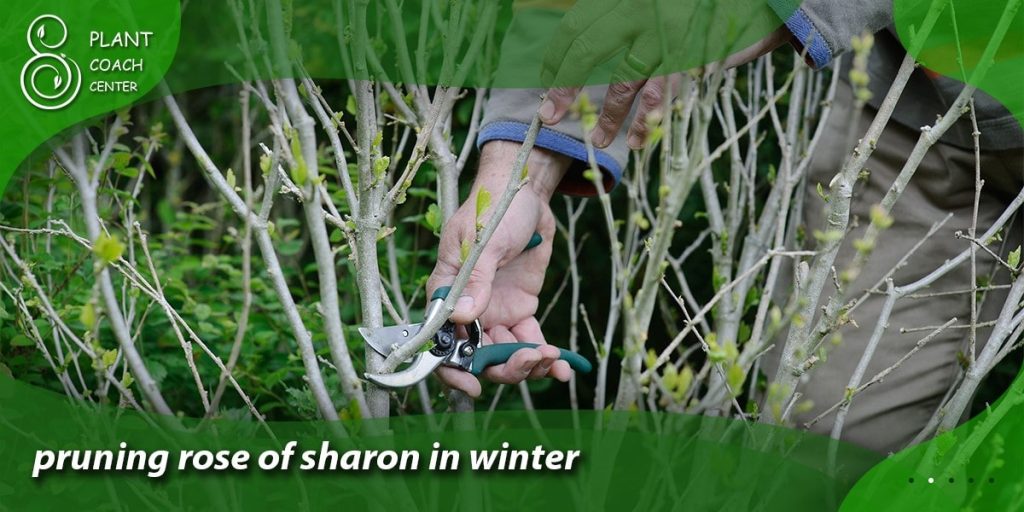
Harnessing the Energy of Renewal
As the days grow longer and the earth stirs from its slumber, your Rose of Sharon awakens with energy, ready to greet the world again. Spring is a time of renewal, and for your shrub, it marks the perfect moment to engage in the art of pruning that encourages growth, shapes form and ensures a spectacular floral display in the months ahead.
Early spring, before the buds swell, is the ideal time to embark on your pruning journey. The plant’s framework is laid bare without foliage, allowing you to assess its structure and make calculated decisions. Begin by removing any dead, diseased, or damaged branches and those that cross over each other. This essential step improves the plant’s overall appearance and promotes air circulation, reducing the risk of disease.
Thin out crowded areas to allow light to penetrate deep into the shrub, encouraging healthy growth from the inside out. As you prune, remember that the goal isn’t just to cut but to sculpt. Visualize the desired shape and balance, ensuring your Rose of Sharon maintains its natural grace while accommodating your garden’s aesthetics.
A word of caution
while spring pruning is crucial, avoid waiting too long into the season to begin. If the shrub has already started producing buds or flowers, you risk diminishing the upcoming bloom display. A delicate balance must be struck between timing and opportunity, underscoring the importance of being attentive to your plant’s growth cues.
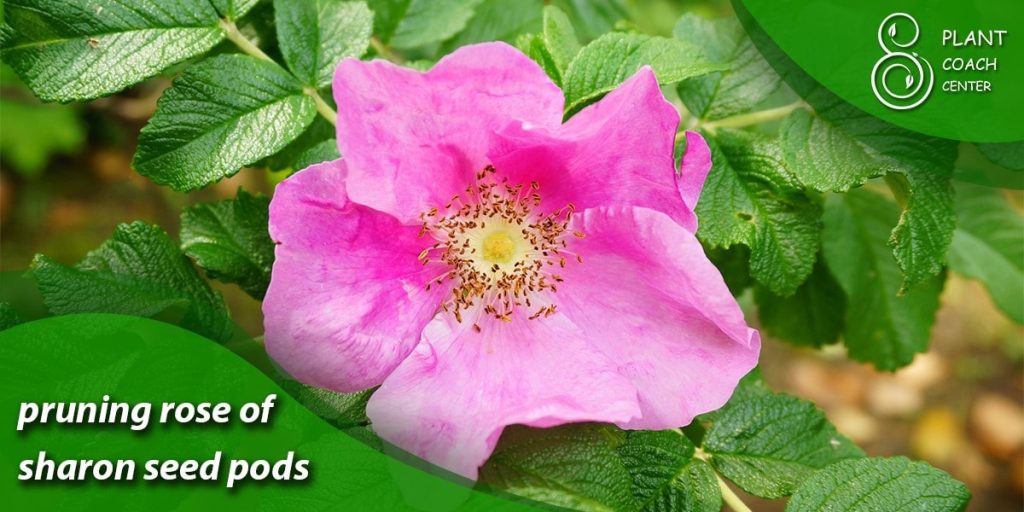
Nurturing Blooms Through Strategic Pruning
As the sun blazes and your garden bursts into a kaleidoscope of colors, your Rose of Sharon takes center stage, adorned with a breathtaking array of blooms. Amidst this vibrant summer symphony, pruning emerges as a vital practice to ensure your beloved shrub’s continued health and splendor.
Unlike many other flowering plants, the Rose of Sharon benefits from a unique approach to summer pruning. While post-flowering is the norm, with this shrub, engaging in light and strategic pruning during the early to mid-summer months is advisable.
Focus on the spent blooms that have faded and withered after their initial show. Removing these spent flowers stimulates the plant to redirect its energy towards producing new buds, resulting in a prolonged and more prolific flowering season. This practice enhances the overall aesthetic appeal of your Rose of Sharon and promotes a robust bloom cycle that lasts well into the season.
When engaging in summer pruning, take care not to remove too much foliage. The leaves are essential for photosynthesis, which fuels the plant’s growth and vitality. Aim for balance by selectively removing only the spent blooms and any weak, straggling branches. Preserving most of the foliage allows the Rose of Sharon to thrive in the summer heat.
Strategic summer pruning is akin to a gentle conductor guiding the symphony’s progression. It nurtures the plant’s innate rhythms, fostering a harmonious balance between growth and flowering. As the summer sun warms your garden and the Rose of Sharon flourishes under your care, remember that the subtle act of pruning is your contribution to this glorious seasonal performance. This feat ensures the bloom’s melody resonates long after closing the curtain.
Preparing for Winter’s Embrace
As the days begin to shorten and a crispness fills the air, your Rose of Sharon prepares for a well-deserved rest. The arrival of fall signals the end of a vibrant blooming season and an opportunity to ensure your shrub’s resilience against the approaching winter. Fall pruning plays a significant role in this preparation, setting the stage for a graceful retreat and a triumphant return when spring comes knocking.
Fall pruning, often undertaken after the flowering season, is characterized by a balanced approach that retains most of the plant’s structure while tidying up its appearance. The goal is to strike a harmonious balance between promoting new growth and conserving energy for the upcoming dormant period.
Start by removing any remaining spent flowers and trimming weak or diseased branches. This encourages the plant to channel its resources towards healing and strengthening rather than sustaining unproductive elements. Thin out crowded areas to promote better air circulation and reduce the risk of fungal diseases that can thrive in damp autumn conditions.
However, exercise caution when it comes to significant pruning during fall. Drastic cuts can stimulate new growth that may need more time to harden off before winter’s chill arrives. As a result, the tender new shoots could be more vulnerable to frost damage.
Remember that fall pruning is also an opportunity to remove any dead or diseased material that could serve as a hiding place for pests over the winter. Tidying up the shrub minimizes the risk of pest infestations and diseases in the following growing season.
As the Rose of Sharon gracefully sheds its summer attire, your thoughtful fall pruning signifies a farewell to the current season and a nurturing embrace as winter approaches. This act of preparation ensures that your shrub remains solid and ready to emerge from its slumber, renewed and vibrant when the cycle of growth begins anew in the heartwarming embrace of spring.
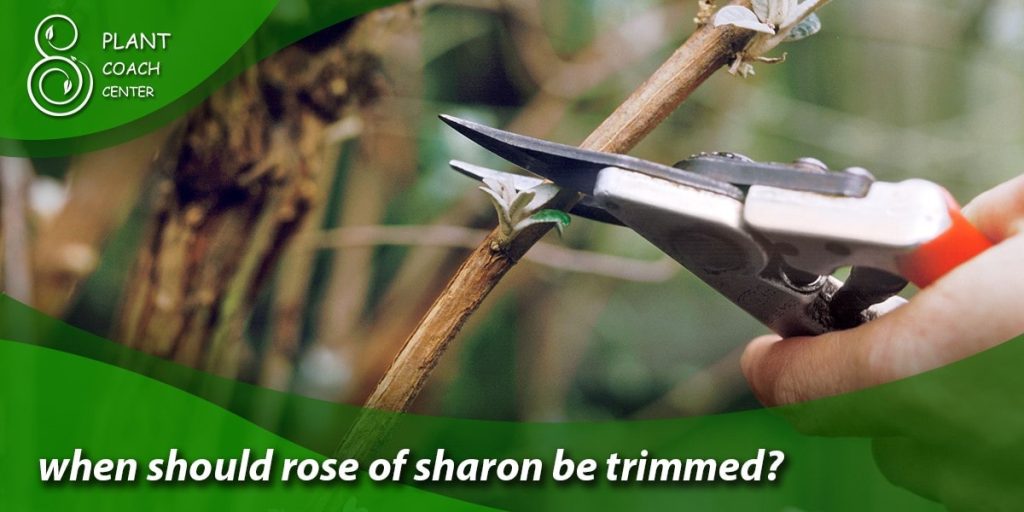
Tailoring Techniques to Your Plant’s Needs
In the intricate tapestry of gardening, one size rarely fits all, and the same holds true for pruning your Rose of Sharon. Each plant possesses its own unique personality, growth patterns, and requirements. Personalized pruning techniques allow you to tap into this individuality, crafting a care regimen that maximizes your shrub’s health and beauty.
Start by observing your Rose of Sharon closely. Study its growth habits, noting where it naturally produces branches and how it responds to different pruning methods. This awareness will guide your approach, ensuring you work in harmony with your plant’s innate tendencies rather than against them.
Consider the shrub’s age and condition. Younger plants typically benefit from a more conservative approach to pruning, as they’re still establishing their structure. On the other hand, older, established plants may require rejuvenation pruning, which involves more significant removal of old, non-productive wood to stimulate new growth.
Personalized pruning also involves understanding your goals. Are you aiming for a dense, compact shrub or a more open, airy growth pattern? Your desired outcome will dictate the extent of your pruning efforts. For example, if you’re seeking an abundant display of large blooms, you might opt for lighter pruning to ensure the shrub has enough energy for flower production.
Timing remains a crucial factor, even within the realm of personalized pruning. While the general principles of seasonal pruning apply, your plant’s specific growth cycle might prompt slight deviations. If your Rose of Sharon tends to bloom later in the season, adjusting your pruning timeline can optimize flowering potential.
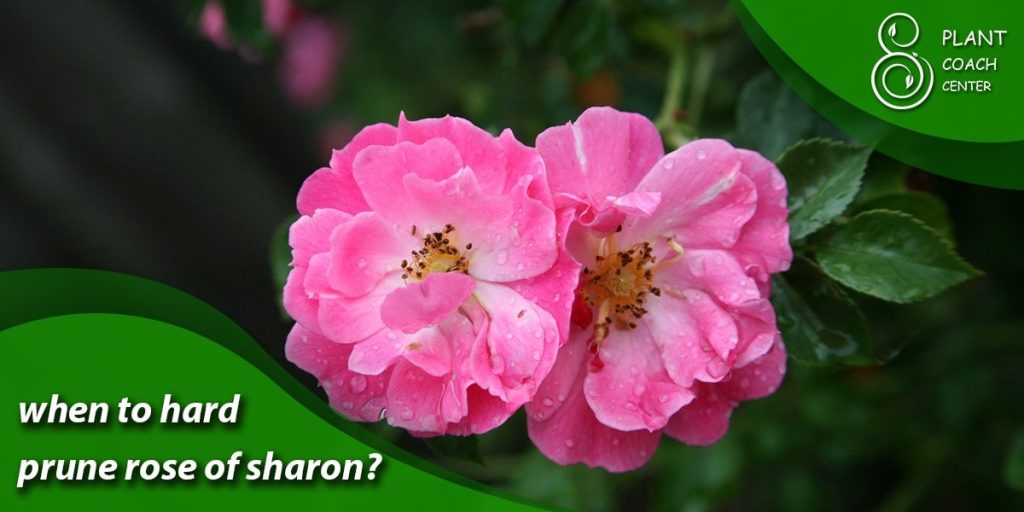
Conclusion
As we conclude our exploration of the art and science of pruning the Rose of Sharon, we find ourselves woven into the rich tapestry of a plant’s life cycle. From the dormant whispers of winter to the exuberant crescendo of summer blooms, each season presents an opportunity to shape, guide, and nurture. By embracing the symphony of timing and technique, we enhance our gardens’ beauty and deepen our connection with the natural world.
Remember, as you embark on your personalized pruning journey, that your Rose of Sharon’s story is unique and unfolds with each delicate snip of the shears. So, let us continue to be stewards of our gardens, cherishing the insights shared in this article and translating them into flourishing landscapes. For more gardening tips, insights, and inspiration, visit PlantCouchCenter.com – your destination for all things green and growing.
When's the best time to prune Rose of Sharon?
Prune during dormancy or after flowering for optimal results.
Can I prune my Rose of Sharon in the summer?
Light summer pruning after flowering can promote new blooms and maintain shape.
How do I personalize pruning for my Rose of Sharon?
Observe growth patterns, age, and goals to tailor techniques for your unique plant.


